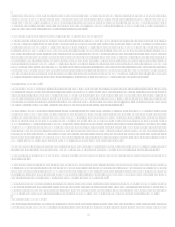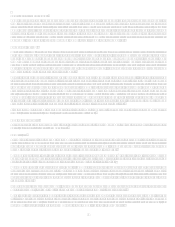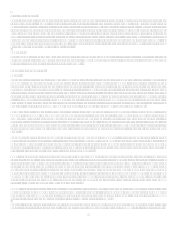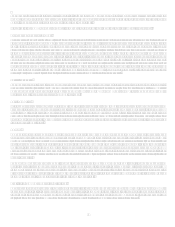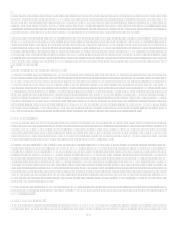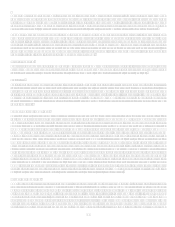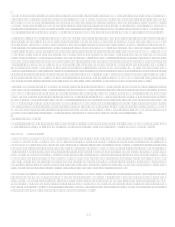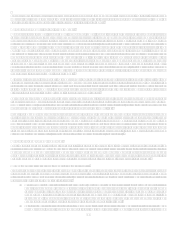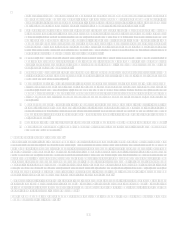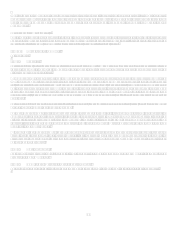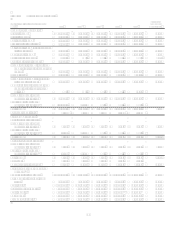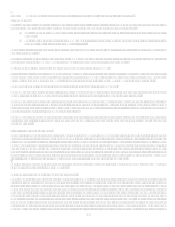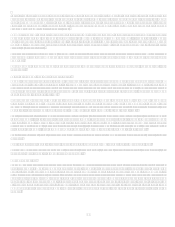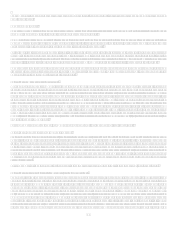Capital One 2007 Annual Report Download - page 36
Download and view the complete annual report
Please find page 36 of the 2007 Capital One annual report below. You can navigate through the pages in the report by either clicking on the pages listed below, or by using the keyword search tool below to find specific information within the annual report.14
This section highlights specific risks that could affect our business. Although we have tried to discuss all material risks, please be
aware that other risks may prove to be important in the future. In addition to the factors discussed elsewhere in this report, among the
other factors that could cause actual results to differ materially are the following:
We Face Intense Competition in All of Our Markets
We operate in a highly competitive environment, and we expect competitive conditions to continue to intensify as merger activity in
the financial services industry continues to produce larger, better capitalized and more geographically diverse companies that are
capable of offering a wider array of financial products and services at better prices. In such a competitive environment, we may lose
entire accounts, or may lose account balances, to competing financial institutions, or find it more costly to maintain our existing
customer base. Customer attrition from any or all of our lending products, together with any lowering of interest rates or fees that we
might implement to retain customers, could reduce our revenues and therefore our earnings. Similarly, customer attrition from our
deposit products, in addition to an increase in rates and/or services that we may offer to retain those deposits, may increase our
expenses and therefore reduce our earnings. We expect that competition will continue to grow more intensely with respect to most of
our products. Some of our competitors may be substantially larger than we are, which may give those competitors advantages,
including a more diversified product and customer base, the ability to reach out to more customers and potential customers,
operational efficiencies, more versatile technology platforms, broad-based local distribution capabilities, lower-cost funding, and
larger existing branch networks. These competitors may also consolidate with other financial institutions in ways that enhance these
advantages and intensify our competitive environment.
With respect to our credit card business, we compete primarily with respect to price (primarily interest rates and fees), credit limit and
other product features. Larger, better capitalized companies may be able to offer credit cards at better rates and with more attractive
features than we can offer. Our other consumer lending businesses, including auto lending, small business lending, home loan lending,
installment lending, our commercial lending businesses, and our businesses in international markets also compete on a similar variety
of factors, including price, loan terms, product features and customer service.
Our banking business competes with national and state banks for deposits, loans, and trust accounts, and also competes with other
financial services companies in offering various types of financial services. In addition, technological advances and the growth of e-
commerce have made it possible for non-depository institutions to offer products and services that traditionally were banking products
and services. Deposit customers are also sensitive to price and service level competition.
In addition, we compete on the basis of transaction execution, innovation and technology. Our industry is subject to rapid and
significant technological changes. In order to compete in our industry, we must continue to invest in technologies across all of our
businesses, including transaction processing, data management, customer interactions and communications and risk management and
compliance systems. We expect that new technologies will continue to emerge, and these new services and technologies could be
superior to or render our technologies obsolete. Our future success will depend in part on our ability to continue to develop and adapt
to technological changes and evolving industry standards. If we are not able to invest successfully in and compete at the leading edge
of technological advances across all of our businesses, our revenues and profitability could suffer.
We Face Risk From Economic Downturns
Credit markets experienced difficult conditions and volatility during 2007. As a bank, Capital Ones operations and financial condition
are affected by general economic and market conditions. Delinquencies and credit losses have risen recently, partially as a result of a
weakening economy and more distress among borrowers. Continued economic weakness may hurt our financial performance as
customers default on their loans or, in the case of credit card accounts, carry lower balances and reduce credit card purchase activity.
A continued economic downturn could have a material adverse effect on our financial condition and results of operations.
We May Experience Increased Delinquencies and Credit Losses
Like other lenders, we face the risk that our customers will not repay their loans. Rising losses or leading indicators of rising losses
(higher delinquencies, non-performing loans, or bankruptcy rates; lower collateral values) may require us to increase our allowance
for loan losses, which may degrade our profitability if we are unable to raise revenue or reduce costs to compensate for higher losses.
In particular, we face the following risks in this area:
Missed Payments. We face the risk that customers will miss payments. Loan charge-offs (including from bankruptcies) are
generally preceded by missed payments or other indications of worsening financial condition. Our reported delinquency
levels measure these trends. Customers are more likely to miss payments during periods of slower economic growth or an
economic downturn. In addition, we face the risk that consumer and commercial customer behavior may change (i.e. an
increased unwillingness or inability to repay debt), causing a long-term rise in delinquencies and charge-offs. Our
bankruptcy experience is generally correlated with national bankruptcy filing trends.
Collateral. We face the risk that collateral, when we have it, will be insufficient to compensate us for loan losses. When
customers default on their loans and we have collateral, we attempt to seize it. However, the value of the collateral may



